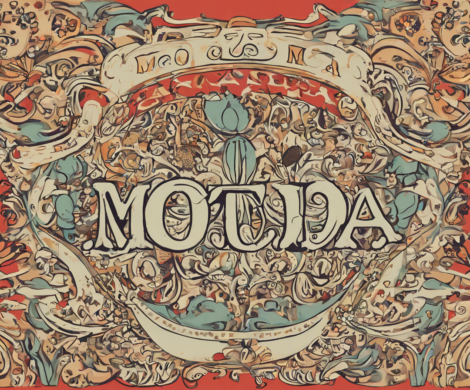Discover the Beauty of Popcorn Flower: A Delicate and Unique Bloom

Introduction
The Popcorn Flower (Plagiobothrys spp.) is a delicate and unique bloom that graces fields and meadows with its distinctive appearance and charming presence. Also known as Plagiobothrys, this flower belongs to the Boraginaceae family, commonly found in North America and other regions around the world. Its small, dainty white flowers with yellow centers resemble tiny pieces of popped corn, hence the name “Popcorn Flower.” In this article, we will delve into the beauty of the Popcorn Flower, exploring its characteristics, habitat, significance, and cultivation.
Characteristics of the Popcorn Flower
The Popcorn Flower is characterized by its small, five-petaled white blooms that measure around 1/4 to 1/2 inch in diameter. These delicate flowers have a yellow center, adding a splash of color to their predominantly white appearance. The plant itself features slender stems with narrow, lance-shaped leaves that grow in a basal rosette or along the stem. Its overall size can vary depending on the species, with some reaching heights of only a few inches, while others may grow up to one foot tall.
Habitat and Distribution
Popcorn Flowers can be found in a variety of habitats, including grasslands, meadows, woodlands, and disturbed areas such as roadsides and fields. They are native to North America, with a wide distribution across the continent from Canada to Mexico. Additionally, some species can be found in Europe, Asia, and Australia. These flowers thrive in open, sunny locations with well-drained soil, and they are often seen blooming in the spring and early summer.
Significance and Symbolism
The Popcorn Flower holds various meanings and symbolisms across different cultures and contexts. In the language of flowers, white blossoms often represent purity, innocence, and clarity. The yellow center of the Popcorn Flower can symbolize sunshine, joy, and positivity. As a wildflower, it is cherished for its unassuming beauty and resilience, blooming in meadows and fields where other plants struggle to grow. Additionally, the Popcorn Flower plays a vital role in supporting pollinators such as bees, butterflies, and other insects, providing them with a source of nectar and pollen.
Cultivation of Popcorn Flowers
If you are looking to cultivate Popcorn Flowers in your garden or landscape, there are a few key factors to consider. These plants prefer full sun to partial shade and well-drained soil. They are relatively low-maintenance and do not require extensive watering once established. To sow Popcorn Flower seeds, choose a location with adequate sunlight, loosen the soil, and scatter the seeds evenly. Gently press the seeds into the soil and keep them moist until germination occurs. As the plants grow, thin them out to prevent overcrowding and promote healthy development.
Popular Varieties of Popcorn Flowers
- Plagiobothrys – Popcorn Flowers (Mixed Colors): This variety features a mix of white, pink, and blue blooms, adding a colorful touch to any garden.
- Plagiobothrys Hispidulus – Hairy Popcorn Flower: Known for its hairy leaves and stems, this variety is a favorite among gardeners for its unique texture.
- Plagiobothrys Tenellus – Slender Popcorn Flower: With delicate stems and tiny white flowers, this variety is perfect for edging or ground cover.
Growing Tips for Popcorn Flowers
- Sunlight: Ensure that your Popcorn Flowers receive ample sunlight for healthy growth and prolific blooming.
- Watering: While these plants are drought-tolerant once established, regular watering is essential during the germination and early growth stages.
- Soil: Plant Popcorn Flowers in well-drained soil to prevent waterlogging, which can lead to root rot.
- Maintenance: Deadhead spent flowers to encourage continued blooming and remove any diseased or damaged foliage to maintain plant health.
- Propagation: Propagate Popcorn Flowers from seeds or by dividing mature plants in the spring for optimal results.
Frequently Asked Questions (FAQs) About Popcorn Flowers
- Are Popcorn Flowers invasive?
-
Popcorn Flowers are not considered invasive and typically do not pose a threat to native plant populations.
-
Do Popcorn Flowers attract pollinators?
-
Yes, Popcorn Flowers are pollinator-friendly and attract bees, butterflies, and other beneficial insects.
-
Can I grow Popcorn Flowers in containers?
-
While Popcorn Flowers prefer open garden spaces, certain varieties can be grown successfully in containers or hanging baskets.
-
Are Popcorn Flowers suitable for xeriscaping?
-
Yes, Popcorn Flowers are well-suited for xeriscaping due to their drought tolerance and minimal water requirements once established.
-
How do I prevent pests and diseases in Popcorn Flowers?
- To prevent common pests and diseases, ensure proper air circulation around the plants, avoid overwatering, and remove any infected plant material promptly.
In Conclusion
The Popcorn Flower is a charming and distinctive bloom that adds beauty to natural landscapes, gardens, and wildflower meadows. With its delicate white petals and yellow centers, this flower captivates the hearts of nature enthusiasts and gardeners alike. Whether you encounter it in the wild or choose to cultivate it in your garden, the Popcorn Flower is sure to bring joy and cheer with its simple yet enchanting presence. Embrace the beauty of this unique wildflower and appreciate its role in the intricate tapestry of the natural world.






